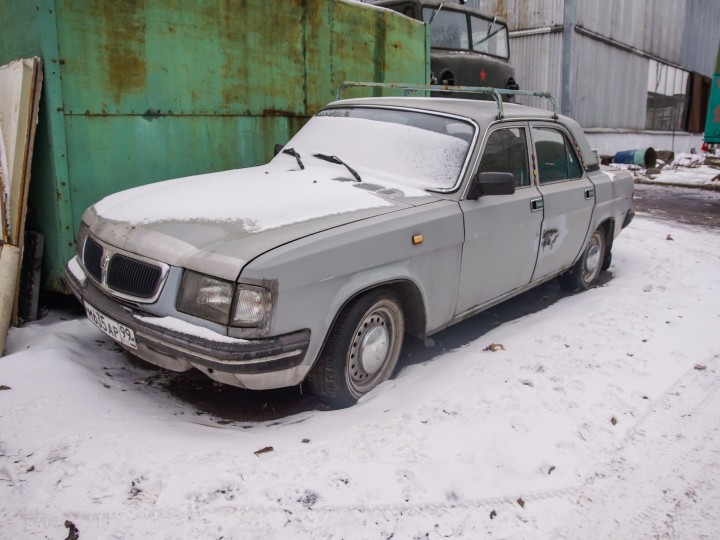1997 GAZ-3110 "Volga"
The engine unit for the new car was already present and a test batch of ZMZ-406 equipped GAZ-31029s was available since 1996. Sharing the 402's piston group, the motor was to all intents and purposes completely new, despite undergoing a lengthy research and design period. The high inertia of the piston stroke limited potential forced induction, and was thus reduced from 92 to 86, hence a volume decline of 2445 cc to 2286 cc. Compression on the naturally aspirated 406 was now 9.3 instead of 8.5 of the 402, and the redline grew to 5500 RPM (4750 on the 402). The 406 engine was mated to the five-speed gearbox. Front disk brakes and power steering was now standard.
Externally the car retained only "skeletal" details of its predecessor: central pillars, doors and platform. The remaining panels were designed from scratch, simultaneously tying in the mid-1990s contoured fashion with passive security crumple zones. A side-asset of this new layout was a dramatic ease in vehicle manoeuvring during tight traffic and parking, as the archaic corners were effectively sanded off, particularly the rear boot space, that narrowed off after the rear-wheel arch. The boot lid had a higher profile and its lip extended to bumper level, simultaneously easing access and increasing volume. Punctuating the new silhouette were 15 inch alloy rims.
Inside the car's interior was also new, with fully adjustable heated seats, foam-filled dashboard and door linings, whose finish colour can be now selected (as opposed to standard black plastic on 24-10/31029). Also new was the soft steering wheel with a driver's airbag (not available initially). The new instrument cluster finally gained a tachometer and battery charge was indicated in volts rather than amperes. Cabin ventilation and heating was also new, and air conditioner was an option. Windows were now athermic, and tinted, the front electrical raisers were standard, the rear, optional.










